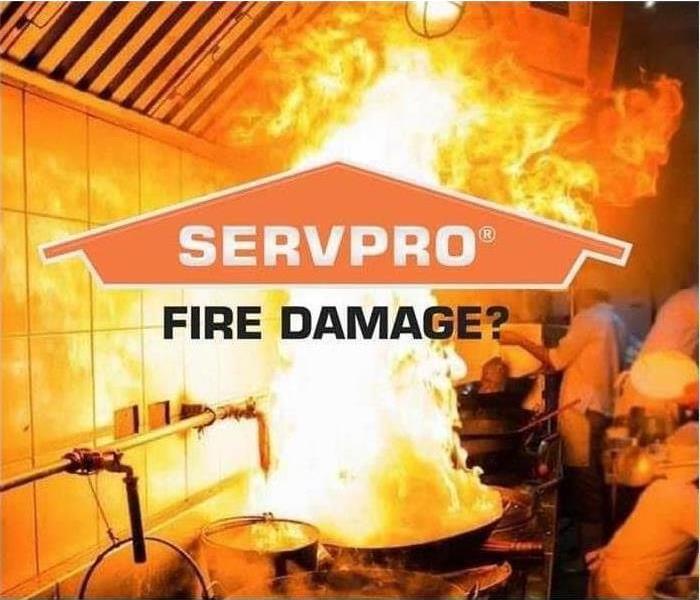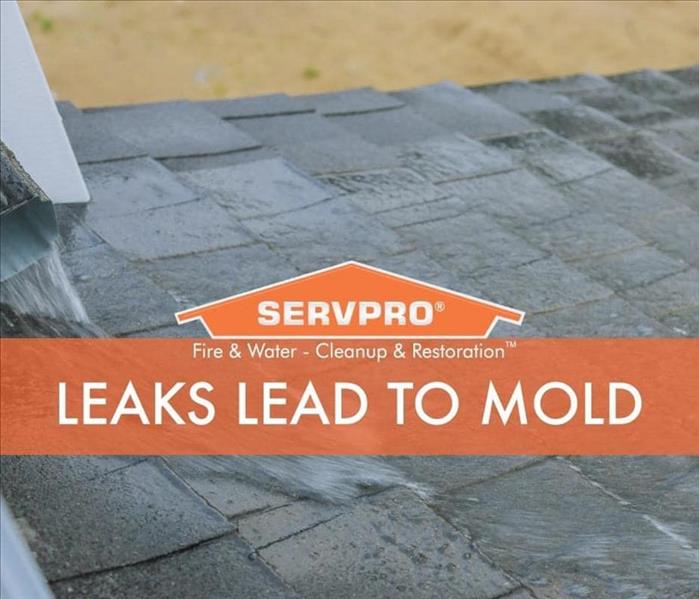Recent Posts
What Are The Different Types of Fire Damage?
11/29/2022 (Permalink)
Dealing with the damage from a fire can be a long process. The fire could have been small, but the smoke from it did the majority of the damage. On the other side, most of the damage could have been from the fire itself. Lastly, there could have been another layer of damage caused when the fire was extinguished. Here are the main types of fire damage that are commonly dealt with.
Flame Damage - This could be from an electrical outlet that caused damage, all the way to a full-blown kitchen fire.
Smoke Damage - Smoke is literally in the air and can (and will) get into everything. Even after the rebuild is completed, there can still be a lingering smell of smoke to the property unless it is dealt with correctly.
3rd Party Damage - This type of damage comes from any in-house sprinkler system used to put the fire out or from the Fire Department themselves when they get to the scene.
Heat Damage - Even though a part of the structure might have not actually caught fire, it was probably severely heated up. This can cause structural damage and possible swelling that you might not notice right away.
After a fire, you could be dealing with flame, smoke, water and heat damage at the same time. FEMA has some great information on what to do after the fire. The best way to make sure that this is taken care of promptly and properly is to contact the team at SERVPRO to get on the job!
What to do When Returning Home after a Storm.
11/29/2022 (Permalink)
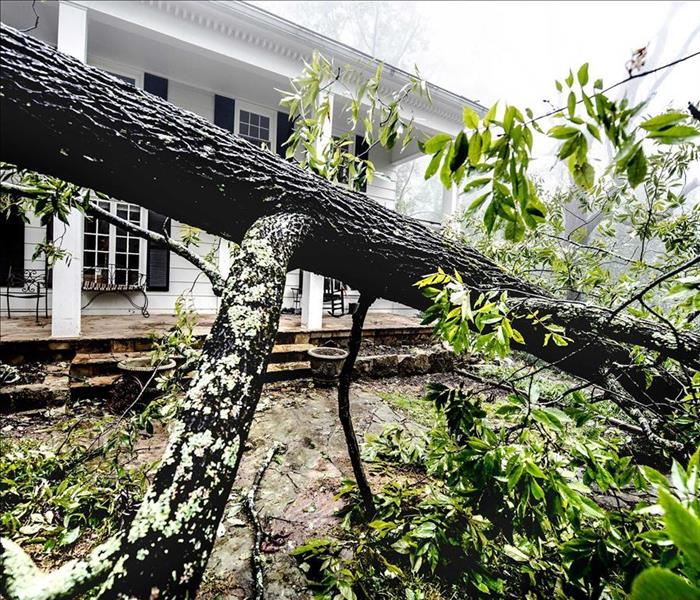
When storms send floodwater into your Tate, Tunica & Southwest DeSoto county home, you don't always know what to do. When is it safe to return to your house? Can you start the cleanup on your own? How you handle a flood will depend on the severity of the damage. It can be helpful to call about storm damage services right after the storm has left your area. You should also try to avoid doing the following:
1. Walking Into Standing Water
Did you know that 6 inches of moving water can cause you to lose your footing? Because even shallow waters can be dangerous, you should avoid walking into any standing water. Your flooded home may be full of stagnant water, but you should still avoid going into it. If the electricity is on, the water could be charged. Stormwater could contain dangerous contaminants, too.
2. Waiting To Schedule a Cleanup
Do you want to try to tackle the water damage on your own? Unless you know how to effectively remove flooding and humidity from your house, you should turn to a professional. The sooner you can schedule your cleanup, the better it will be for your home. If you wait too long, you may have increased mold growth in your space.
3. Returning to Your Home Too Soon
While you want your life to return to normal, you need to make sure the flood water is completely gone before you return. Going home too soon can make it harder for the cleanup crew to properly remove excess humidity. The cleanup may require building materials to be replaced, which can leave your home dusty. If you wait until the entire process is finished, you can return to a more normal life right when you move back in.
Storm flood water may cause you to leave your home until the damage can be fixed. Taking the wrong steps after this type of flood can make the restoration process harder than it has to be, so remember what not to do. You can find more detailed information from Ready.gov.
Signs of Roof Water Damage.
11/29/2022 (Permalink)
Your roof may be leaking and damaging your home's structures. Here are the signs to look out for.
Most homeowners assume their roof is in okay condition until it leaks or shows overt signs of water damage. There are several indicators that your roof has experienced water damage and needs repair, including water stains on the ceiling and missing shingles.
Homeowners need to pay close attention to these warning signals and make the required fixes to prevent the issue from worsening.
To this end, SERVPRO of Tate, Tunica & Southwest DeSoto County, the leading roof leak water damage expert in the Greater Memphis Metropolitan area, has outlined the telltale signs to help homeowners identify roof water damage.
1. Watermarks and spots on your ceiling
Water stains and spots on the ceiling are the most common signs that your home suffers from water damage. Your roof can become leaky, allowing water to get into your ceiling.
Over time, the slow leak that seeps down the ceiling will typically lead to dark water stains, discolored spots, and darkened ceiling paint.
Most of the time, what appears to be a small stain on your ceiling can quickly transform into a significant issue. So it's essential to act promptly and have it fixed.
2. Water stains on the wall's exterior
Water stains on a building's exterior point to flashing damage. The flashing can become rusty over time, allowing rainwater to seep in, which would cause wet spots on the walls.
It's essential to fix any flashing damage immediately you notice it. If water has already entered your home, you may need to have a water damage expert inspect it to prevent mold development.
3. Mold growth
Mold can spread quickly throughout your house, even from the smallest roof leak. Any part of your ceiling or walls can develop mold if left damp for over 24 hours. So it's essential to act quickly once you notice any leaks.
Hire a water damage restoration expert to remove any mold, fix a leaky roof and treat the moist surface to ensure the mold doesn't return.
4. Missing or broken shingles
Have you seen any missing, blistered, warped, or buckled shingles on your roof? If so, your roof may have suffered storm damage, and your home may also have been affected.
Missing shingles expose your roof to the elements. When your roof has missing shingles and is subjected to rain, wind, or hailstorm, a roof leak is almost inevitable, which leads to water damage.
5. Bad Smells
As a homeowner, you need to find the source of any distinctive odors in your home that persist for more than a few days. When water damage occurs, you may perceive a musty odor each time you use the heater or open specific windows.
Check your attic to see whether any insulation rolls or batts are damaged, as the odor can occasionally be caused by damp insulation.
6. Sun in the attic
Do you notice sunshine filtering between the beams when you go to your attic? A leaky roof is almost always indicated by sunlight entering your attic. The presence of daylight outside your house indicates that water may also find its way inside.
If the roof beams exhibit moisture or mold development, then the attic has likely already sustained water damage. In virtually all cases, a roof replacement or repair is necessary to stop future water damage.
Get Professional Roof Leak Water Damage Services in Lakewood, New Orleans
SERVPRO of Tate, Tunica & Southwest DeSoto County is a leading name when it comes to roof leak water damage repair and other water restoration services in Lakewood, New Orleans. They have a team of experienced and trained experts who will identify and fix roof leaks, clean damaged home structures, and restore affected belongings.
When you are ready to hire the professionals, give your local SERVPRO a call today!
Tips on How to Clean a Moldy Washing Machine
9/23/2022 (Permalink)
Take preventative measures in your washing machine. It's natural to assume that our washing machine is self-cleaning, especially with all that soap and warm water tumbling around. However, this isn't always the case. Your laundry machine has a pretty high risk of falling victim to mold growth, especially if you don't take the proper preventative measures. Follow these steps if your laundry machine has an unwanted mold smell.
Getting Rid of the Mold:
Luckily, mold is extremely easy to clean out of a laundry machine. Just follow these steps:
- Create a non-toxic, mold cleaning mixture using equal parts baking soda and fresh water, 1/4 of each product should suffice. Add this cleaning solution to the machine's detergent container.
- Pour two cups of white vinegar directly into the drum itself.
- Run a normal wash cycle on the highest heat setting possible. Make sure you don't have any clothes in the washer for this specific cycle.
- After the cycle ends, use a kitchen sponge or scrub brush to attack any remaining patches of mold. Use a mixture that contains equal parts of white vinegar and fresh water for this process.
- Even if your washing machine isn't suffering from mold growth, it's still a good idea to repeat the above process at least once each month for maintenance purposes. After all, the best offense is a great defense.
Preventing Mold Growth
Once you've gotten rid of the mold that caused your musty, dirty laundry, you're going to want to keep it away. Prevent subsequent mold growth by keeping your machine's drum as dry as possible. This involves removing your laundry as soon as possible after the wash cycle ends and leaving the washer's door open to dry out when you aren't using the machine. You might also consider running a fan near the washer to help accelerate airflow.
Nothing ruins the excitement of laundry day quite like a moldy washing machine. Using the above technique should solve the problem, but if it doesn't then you need to contact mold remediation experts for further help.
Call your local SERVPRO today!
662-349-6500
How to Prevent Clogged Gutters from draining water into your home
9/21/2022 (Permalink)
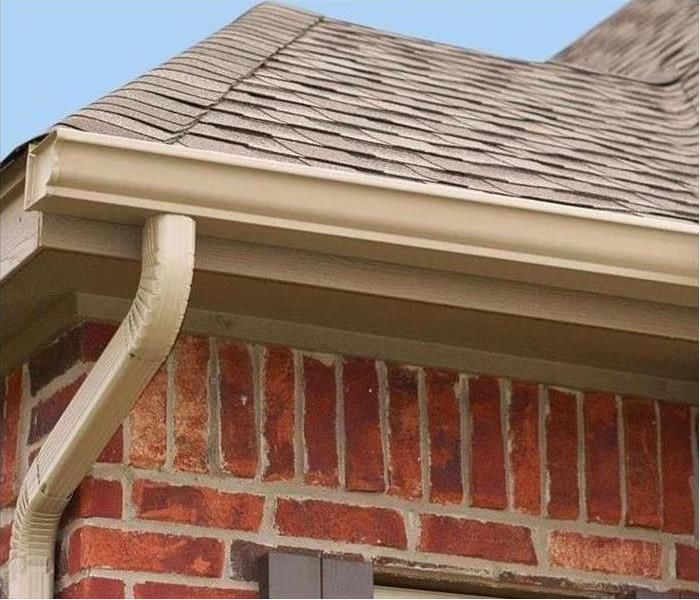 Call your local SERVPRO today!
662-349-6500
Call your local SERVPRO today!
662-349-6500
-Water Damage is a Possibility with Misaligned Gutters
Watching the rain hit a window as it cascades downward might entertain children, but homeowners should see such activity as a sign of impending problems involving their homes. Gutters clogged with leaves, twisted sections, or broken, disconnected areas can cause water to hit your home instead of flowing correctly.
Once your gutters receive the required repairs, SERVPRO can mitigate any water damage in your home's living space. When water damages a home because of misdirected rainfall, it can also affect window frames, particularly those made of wood. Interior walls made of drywall can break away in sections or crumble at the slightest touch.
When SERVPRO technicians perform mitigation of water damage, we always check the moisture content of surrounding materials to ensure that they remain undamaged. Materials can seem uncompromised even after water seeped into them. Early detection of this situation means we can get the affected area dried out quickly and prevent permanent damage. Helping our customers save money is always important to us at SERVPRO.
Water can also occur at the floor level after entering a house. Once there, it can begin warping trim and floorboards. We carry highly effective equipment that handles drying out the moisture inside walls and other structures inside a house. After removing the baseboards and drilling two small holes, we can place the flexible tubing attached to our injection system. Once ready, we can begin moving warm, dry air through the wall's cavity and get it dry again.
When moisture invades a floor, we can use mats that work similarly. Air movers also work to increase evaporation, and desiccant machines extract water vapor from the air as it circulates. Wherever materials show water damage, we only remove what is necessary and as neatly as possible.
SERVPRO wants to help you keep your home in the best condition possible.
Call your local SERVPRO today!
662-349-6500
Do you know if you are in a Flood Zone?
9/20/2022 (Permalink)
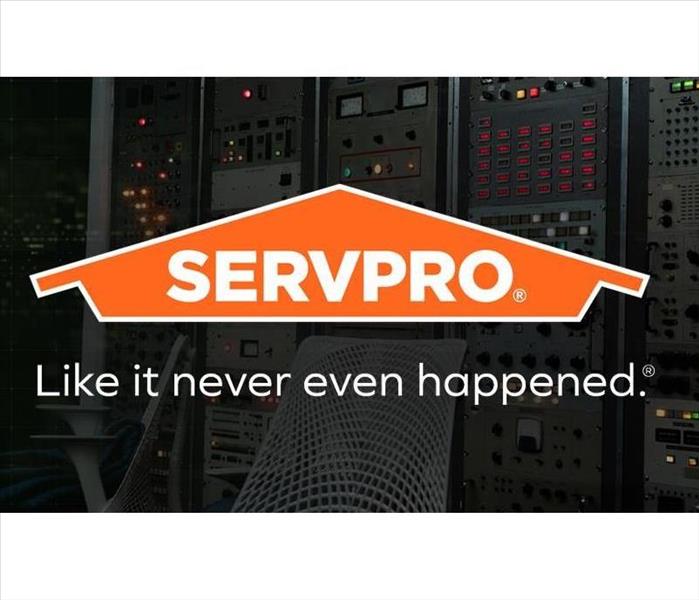 "Like it never even happened."
"Like it never even happened."
Do you live in a potential flood risk zone? If you don’t know the answer to that very important question. It allows you to easily enter your business, home, or other address to determine if your property is at risk for flooding based on a visual flood map. If you happen to live in a flood risk zone and your residential or commercial property is hit with flood damage, we can come to your rescue and make the damage “Like it never even happened.”
With more than 1,700 franchises strategically positioned throughout the U.S. and Canada, help is near when you experience flooding at your home or business.
No job is ever too big or too small for our team here at SERVPRO. Our heroes have helped rescue the day at a number of storm emergencies, such as Hurricane Ida, and many others. We can do the same for you should you ever experience such an event.
Call your local SERVPRO today!
SERVPRO of DeSoto, Tate & Tunica Counties
662-349-6500
"Like it never even happened."
Tips for Cleaning Your Crawlspace After a Flood
9/14/2022 (Permalink)
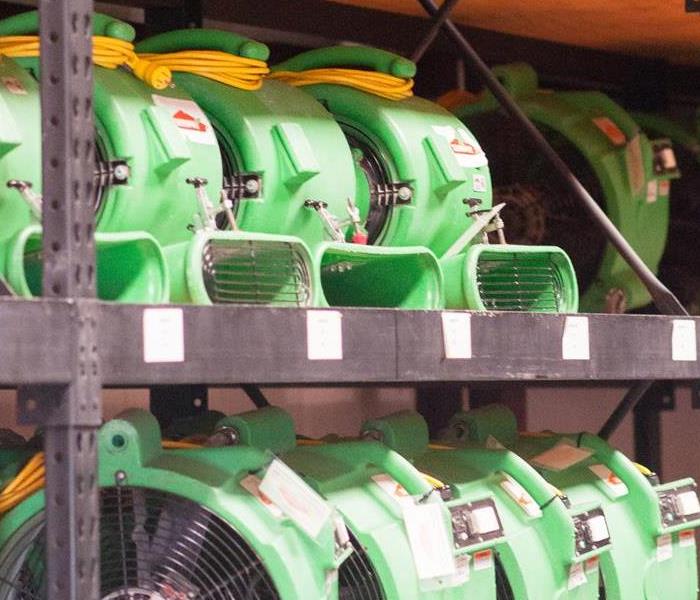 Call your local SERVPRO Today!
Call your local SERVPRO Today!
A home flood can occur any time there is a storm. While there are things you can do to protect your home during storm season, floodwater may still get in. It’s important to mitigate the damage not only in the spaces you can see but also in the spaces that are not readily visible. You should always check your crawlspace for flooding after heavy rain.
Appropriate Safety Precautions
There are several safety precautions to take when you know your home has storm damage. Anyone who enters standing water should wear proper protective gear:
• Rubber boots
• Heavy gloves
• Face mask
• Protective coveralls
You should also turn off the electricity to reduce the risk of shock. Use good judgment -- if you think any part of your home may be unsafe, stay elsewhere. Leave wading through floodwater in your crawlspace to the technicians from the flood restoration company that you hire to mitigate the damage.
Accurate Documentation
You should report your home flood to your insurance company, but an adjuster may not be able to make it to your house quickly if there are a lot of problems in the area due to the storm. To capture the most accurate evidence of the damage, it’s a good idea to take pictures or videos of the flood’s impact on the crawlspace and other affected areas. This can be valuable when you are filing your claim.
Thorough Cleanup
Ideally, your sump pump will kick in when the water in your crawlspace starts to rise, so that should take care of a lot of the major extraction. The area must be completely dried and disinfected before the job is done, though. A thorough cleanup helps prevent mold growth and the subsequent damage it can cause to the structure of your home.
Home flood cleanup must cover both the areas you can see and those you cannot see. Don’t forget spaces such as your crawlspace when assessing the damage.
Ways You Can Safely Use Candles In Your Home
9/13/2022 (Permalink)
 Call your local SERVPRO today!
662-349-6500
Call your local SERVPRO today!
662-349-6500
Avoid Candle Fires in your Home
With warm light and pleasant fragrances, candles can be an easy way to create the atmosphere that you want in your home. However, they can also become a safety hazard if not used properly. Candle fires are common, but the following tips can help you avoid them.
1. Never Leave Burning Candles Unattended
It may seem like an annoyance to extinguish a candle every time you leave the room. However, leaving it burning could result in a candle fire if something gets too close to the flame or if it burns too low. It is best to blow out candles before going to sleep as well, even if you are in the same room.
2. Always Keep Them Out of Reach of Pets and Children
Both children and pets often come with an excess of energy and curiosity. For this reason, it can be easy for them to inadvertently start a candle fire. Keep burning candles in an area that is not within reach, and do not leave them unsupervised.
3. Keep Them Away From Any Flammable Items
When you are using a candle, you should be sure to have the area free of flammable objects. This can include papers as well as fabrics such as curtains and bedding. These types of items should be at least a foot away from any candles that are in use. Flammable liquids should be kept even further away.
4. Use an Alternative to Candles
Perhaps the easiest way to prevent a fire is simply not to use candles at all. There are a variety of other ways that you can achieve a more relaxing home environment. If you are only interested in adding a pleasant scent to your home, a wax warmer is a great option. You can also buy battery-operated flameless candles that look and smell like the real thing.
While these tips can help you prevent an emergency, accidents can still occur. Whether it is small or large, fires often require smoke cleanup and some repairs. If this happens SERVPRO can help return your home to its previous condition.
Tips for Handling Water Damaged Electronics
9/12/2022 (Permalink)
 Flooded electronics are just one of several problems caused by water damage.
Flooded electronics are just one of several problems caused by water damage.
Suppose your building was flooded, whether by a storm, or a burst pipe, then you will likely be dealing with quite a bit of damage. Along with the structure of the building and the furniture inside, your equipment can be affected as well. If you have flooded electronics, it is essential to handle them cautiously to prevent further damage. The following tips can help.
1. Remove Them From the Water Immediately
It is probably obvious that the first thing you should do is remove your electronics from the water. The longer they are submerged, the more damage they are likely to suffer. Quickly relocate them to a dry area to prevent additional problems from moisture.
2. Wipe Down the Exterior
While you are most likely more concerned with the inside of your flooded electronics, you should not neglect to care for the exterior. Use a towel or cloth to thoroughly dry the outside of any affected items to prevent corrosion. This also keeps any water on the outside from entering the device.
3. Do Not Turn Them On
It can be tempting to check the state of electronic damage by turning on your equipment, but this is not a good idea. Even if the outside is dry and it looks like it might be fine, moisture may be hiding on the inside. If you turn on your device before it has completely dried, this can cause even more damage that may make repairs impossible.
4. Have Them Inspected by a Professional
If your devices have been submerged in water, you need to have them examined by a professional to determine the extent of the electronic damage. In some cases, they may be able to repair them, saving you from the cost and frustration of having to purchase a replacement.
Flooded electronics are just one of several problems caused by water damage. If you need work done on your building, a clean-up and restoration service can do this for you. They can have your building back to its previous condition quickly and can salvage many of your damaged belongings.
Facts About Mold
9/6/2022 (Permalink)
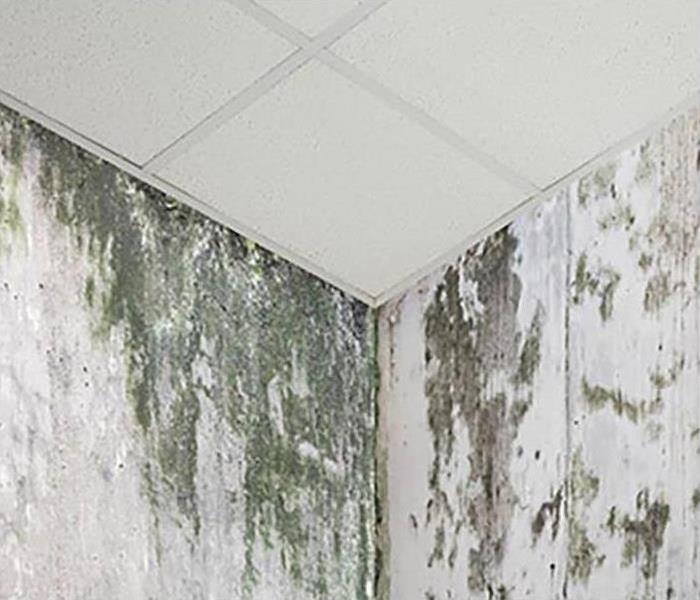 SERVPRO of DeSoto, Tate & Tunica Counties
SERVPRO of DeSoto, Tate & Tunica Counties
Where there is moisture there is mold. Don't wait when you find unwanted water call SERVPRO of DeSoto, Tate & Tunica Counties.
Mold is a type of fungus that consists of small organisms found nearly everywhere. It can be black, white, orange, purple, or green. Mold thrives on moisture and reproduces utilizing tiny, lightweight spores that travel through the air. When mold is growing on a surface, spores can be released into the air where they can be easily inhaled.
The exact number of mold species is still unknown, scientists estimate that there are thousands. Many of them can affect your home and business.
Here are the three most common kinds of mold and how they are identified.
1. Aspergillus
Aspergillus is frequently found wherever dust accumulates and spreads to areas like floors, wallpapers, and air filters. It typically has a brown or dark green color and certain species are also found in food.
2. Cladosporium
Cladosporium colonies can grow in bathrooms, basements, and on any wooden surface. Typically, you can spot this type of mold by its green or brown color. This mold is possible to remove by yourself but calling qualified mold experts can assist in its disposal.
3. Stachybotrys
Stachybotrys earned its nickname, black mold, through its distinctive greenish-black and gel-like appearance. It is frequently found where moisture dwells such as in restrooms or on walls in rooms that have experienced flooding.

 24/7 Emergency Service
24/7 Emergency Service
